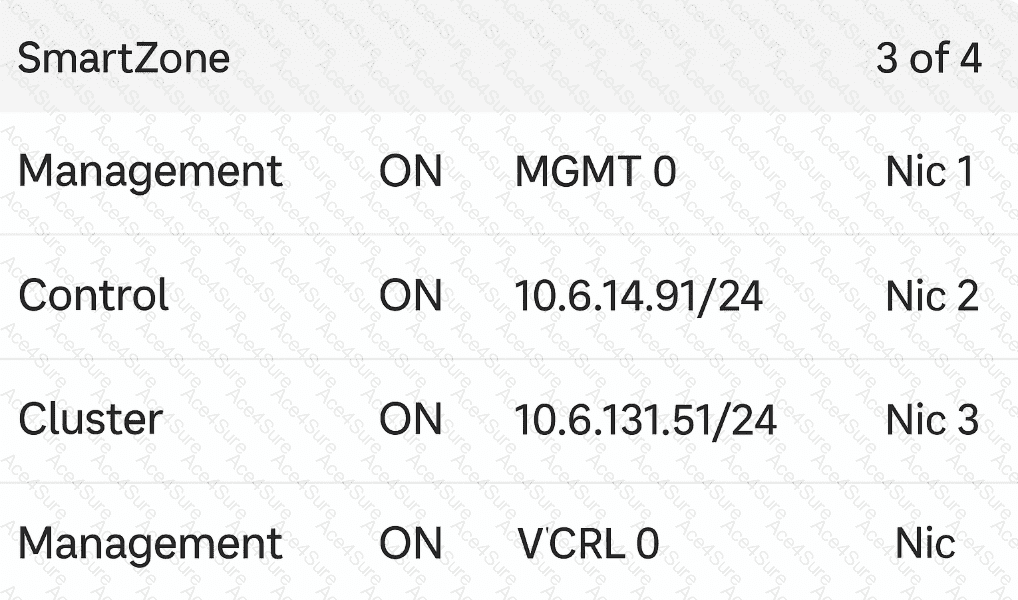The exhibit shows avirtual SmartZone (vSZ)configuration running in a VMware environment withthree separate virtual NICs (vNICs), each mapped to a different port group:Management,Control, andCluster.
According toRUCKUS One Online Help – SmartZone Interface ConfigurationandRUCKUS AI Documentation – SmartZone High-Scale Architecture, this design is specific tovSZ-H (High-Scale)deployments, which requirethree distinct network interfacesfor distributed control, management, and cluster synchronization.
Thethree NIC mappingsconfirm physical or virtual separation of traffic for scalability and redundancy (AandE).vSZ-E(Essentials) requires onlytwo interfaces(Management and Control) and does not use a dedicated cluster interface, distinguishing it from vSZ-H (D).
There is no indication of a four-node cluster in the exhibit, and SmartZone appliances typically show node counts under the Cluster Dashboard, not at the NIC configuration stage.
Thus, based on the configuration, this is avSZ-Hsystem withthree NICs and three port groups, each serving a dedicated function.
[References:, RUCKUS One Online Help – SmartZone vSZ-H Network Interface Roles, RUCKUS Analytics 3.5 User Guide – Controller Connectivity and Cluster Interfaces, RUCKUS AI Documentation – vSZ-H Deployment Topologies and Port Group Mapping, , , , ]

